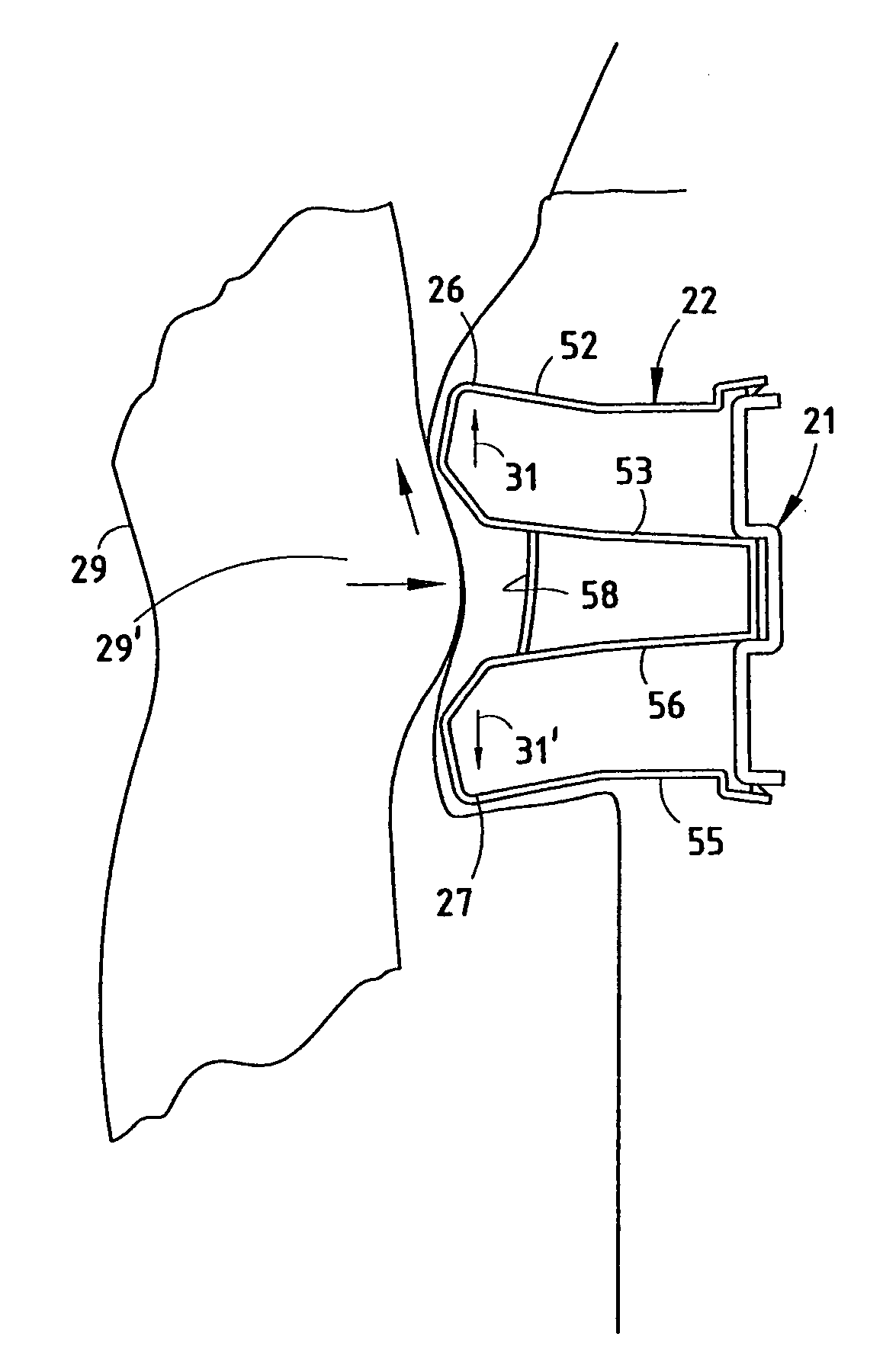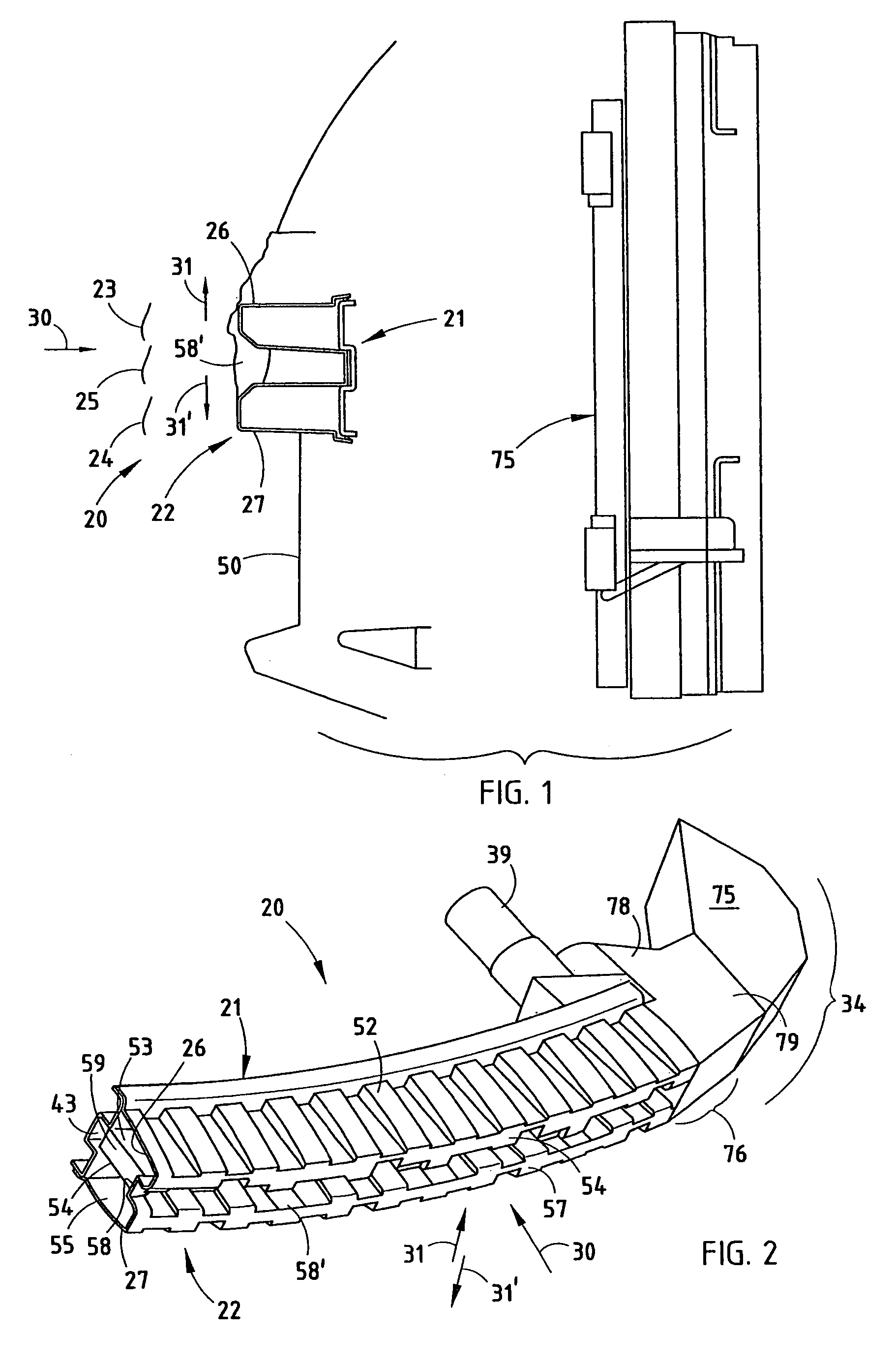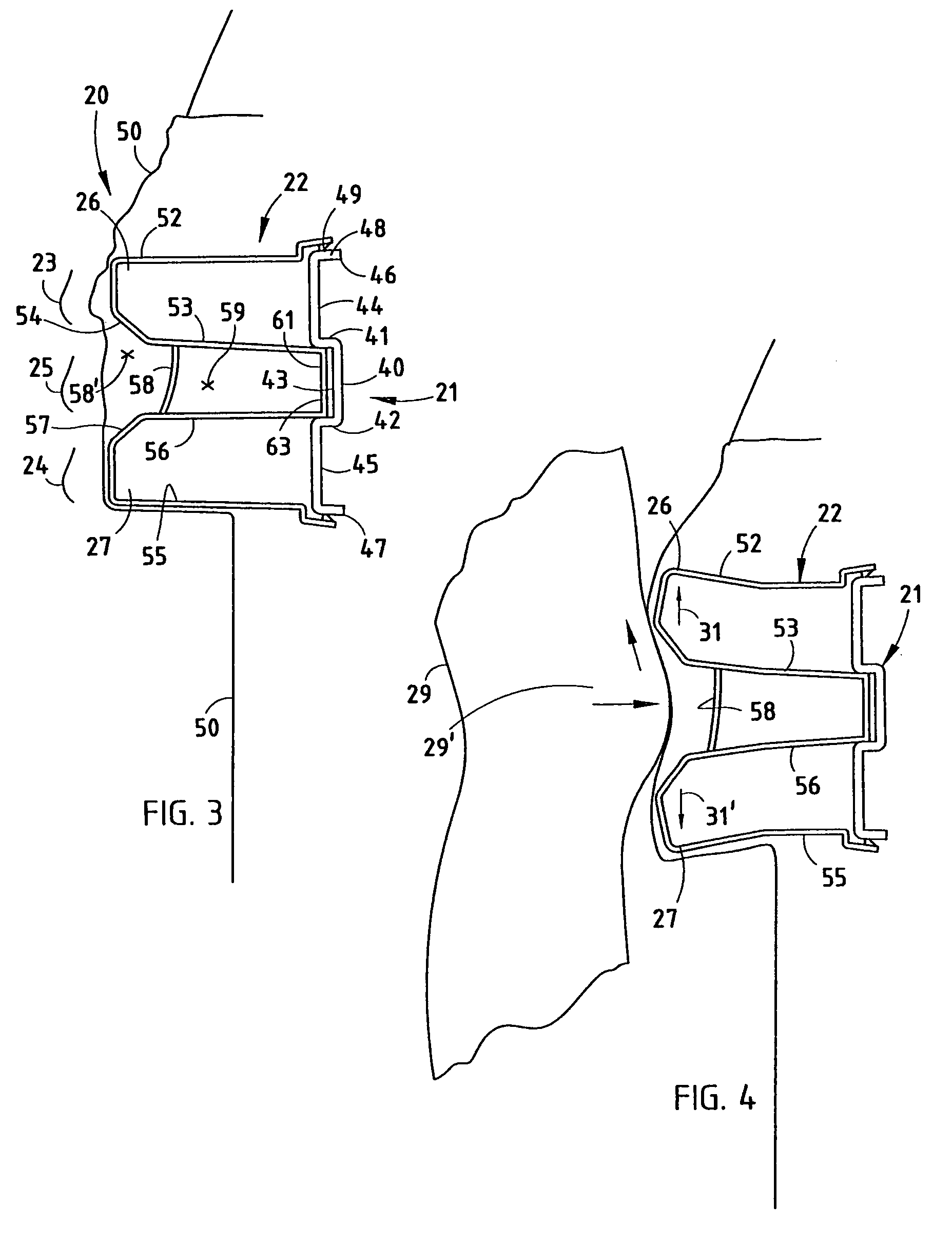Bumper for reducing pedestrian injury
a technology for pedestrians and bumpers, applied in the direction of bumpers, vehicle components, pedestrian/occupant safety arrangements, etc., can solve the problems of difficult to reduce the magnitude and rate of energy transfer from bumpers to pedestrians upon impact, human body cannot withstand high-energy impacts nor sharp impacts without substantial damage to muscle and bone tissue, etc., to achieve less injury, less energy, and reduce injury
- Summary
- Abstract
- Description
- Claims
- Application Information
AI Technical Summary
Benefits of technology
Problems solved by technology
Method used
Image
Examples
Embodiment Construction
[0018]A vehicle bumper system 20 (FIGS. 1–2) includes a beam 21, and an energy absorber 22 with top and bottom horizontal sections 23, 24, and a middle horizontal section 25. The top and bottom horizontal sections 23–24 form top and bottom nose portions 26 and 27 that are semi-rigid but collapsible with a parallelogram motion that shifts the top and bottom portions 26 and 27 vertically up (or down) upon impact. As a result, horizontal impact forces 30 are converted in part to vertical forces 31 during an initial stroke of a frontal impact (FIG. 4), in effect “catching” the knee 29′ (FIG. 4) of a human 29 during a collision. Upon a continuing impact stroke (FIG. 5), the top and bottom horizontal sections 23–24 provide a “throwing” action, as shown by increasing forces 31 and 31′. During the continuing impact stroke, the horizontal sections 23–25 also crush and provide increased energy absorption, as shown by FIG. 5. The combination of these forces 31 and 31′“throw” the impacted human...
PUM
 Login to View More
Login to View More Abstract
Description
Claims
Application Information
 Login to View More
Login to View More - R&D
- Intellectual Property
- Life Sciences
- Materials
- Tech Scout
- Unparalleled Data Quality
- Higher Quality Content
- 60% Fewer Hallucinations
Browse by: Latest US Patents, China's latest patents, Technical Efficacy Thesaurus, Application Domain, Technology Topic, Popular Technical Reports.
© 2025 PatSnap. All rights reserved.Legal|Privacy policy|Modern Slavery Act Transparency Statement|Sitemap|About US| Contact US: help@patsnap.com



